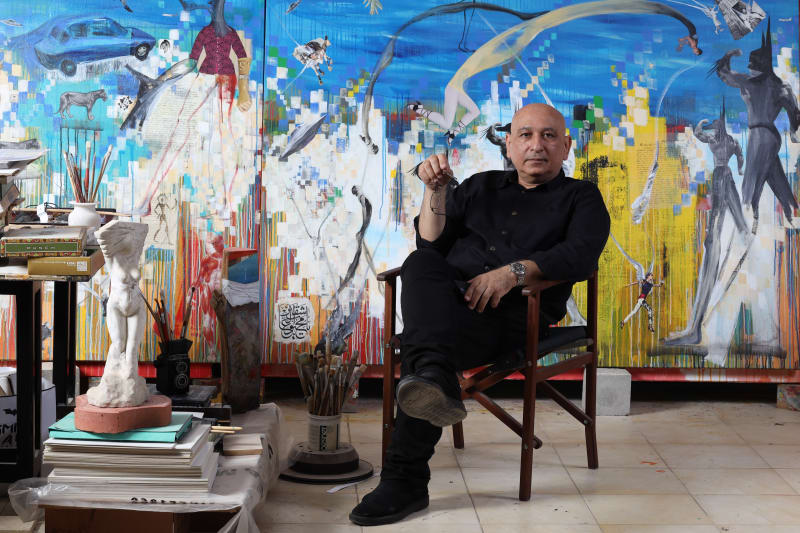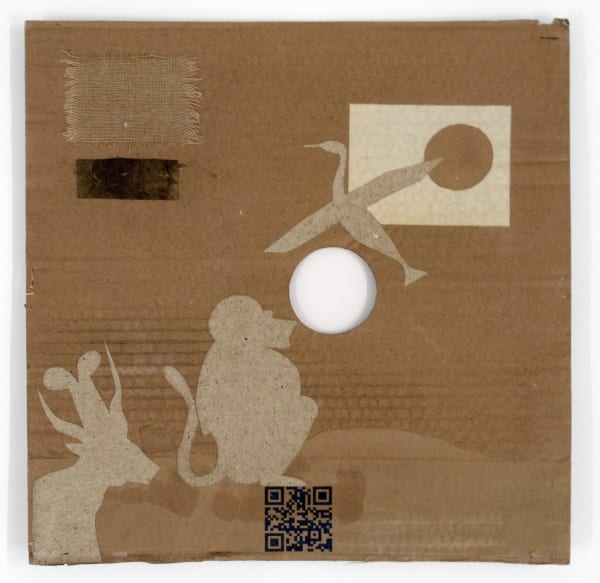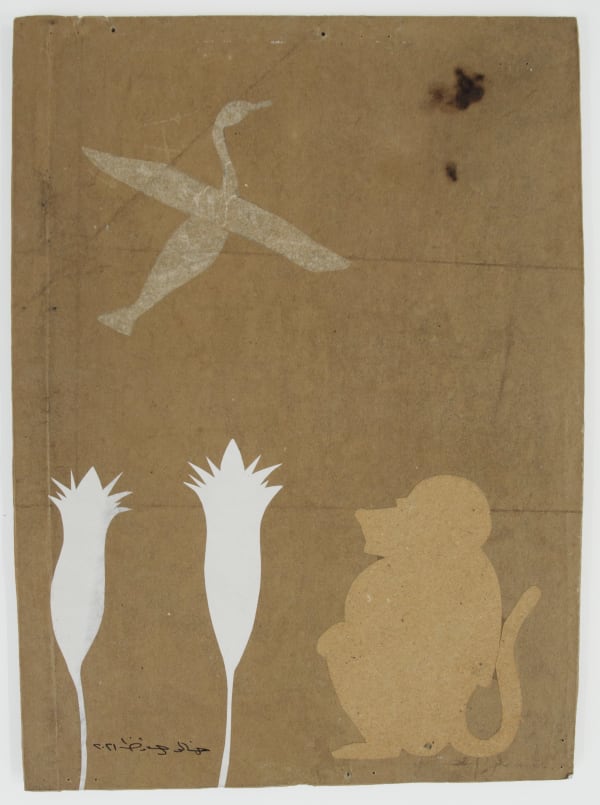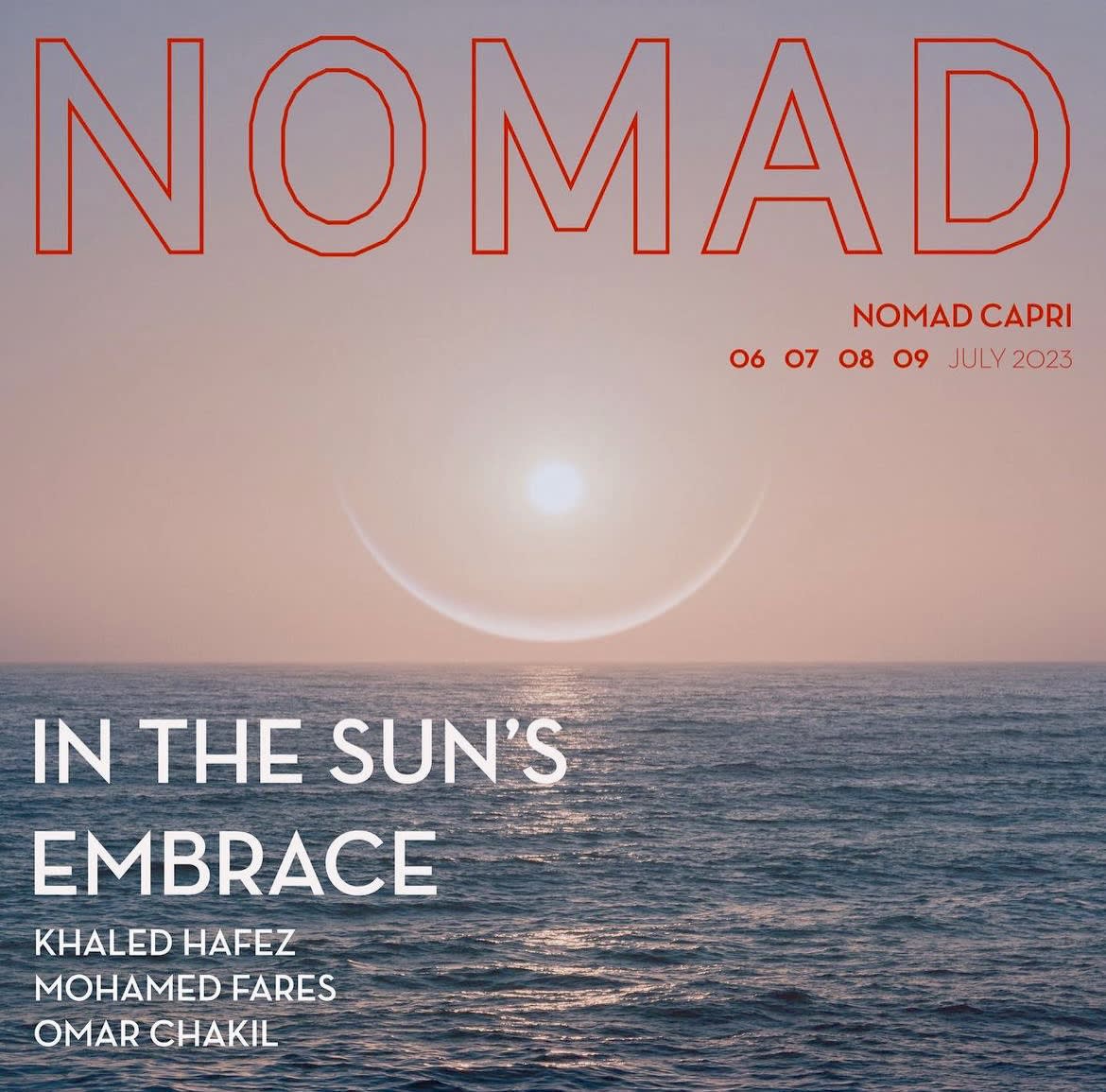Khaled Hafez Egyptian-French, b. 1963
Illustrated History of the Mundane is a long-term project with several "chapters." The initial idea started - and later evolved - with the lockdown of 2020 and was sustained for around two years in Cairo, where Hafez is currently based.
Khaled Hafez is an Egyptian-French visual artist, filmmaker and educator. He is born in Cairo, Egypt in 1963 where he currently lives and works. He studied medicine and followed the evening classes of the Cairo School of Fine Arts (Faculty of Fine Arts) in the eighties. After attaining a medical degree in 1987 and M.Sc. as a medical specialist in 1992, he gave up medical practices in the early nineties for a career in the arts. He later obtained an MFA in new media and digital arts from Transart Institute (New York, USA) and Danube University Krems (Austria). Hafez practice spans the mediums of painting, film / video, photography, installation and interdisciplinary approaches. Hafez, a Fulbright Fellow, Rockefeller Fellow, and Fellow of the Royal Society of Arts (FRSA). Hafez occasionally curates visual arts and photography exhibitions for younger peers.
Illustrated History of the Mundane is a long-term project with several "chapters." The initial idea started -and later evolved- with the lockdown of 2020 and was sustained for around two years in Cairo, where Hafez is currently based. The works were created with numerous types of packaging, paper and cardboard. The intended target number of surfaces was 90 pieces of work, but it was never achieved. After 63 works were completed, the project developed into the "mummification" of every possible unused studio object and clutter; the sculptural results-pieces, mummified in linen and placed on a display table cabinet- of the same conceptual framework is the three-dimensional manifestation of the connotation of future archaeology: what would 4000-year future generations find while excavating our spatial and temporal spheres?
The military iconography used on the cardboard works emulates our contemporary hieroglyphs, the language of subjugation, wealth, power, and invasion; the entire project's choice of material represents the "collective global state of the art," pun intended. This project was supported by Stockholm Stad - Konstframjandet Stockholm, with thanks to IASPIS, the Swedish Arts Grants Committee`s International Program for Visual and Applied Arts.
International Biennales Include: 57th Venice Biennale, Italy, 2017 (National Pavilion Grenada), 2nd Asuncion Biennale, Paraguay, 2017, Curitiba Biennale ‘17, Brazil, 2017, 56th Venice Biennale, Italy, 2015 (Official Collateral Biennale Exhibition), 3rd Mardin Biennale, Turkey, 2015, 6th Moscow Biennale, Russia, 2015, 1st Trio Biennale, Rio De Janeiro, Brazil, 2015, 1st Bienal del Sur, Caracas, Venezuela, 2015, 15th FotoFest Biennale, Houston, USA, 2014, 55th Venice Biennale, Italy, 2013 (National Pavilion Maldives), 11th Havana Biennale, Cuba, 2012, 9th Bamako Photo Biennale, Mali, 2011, 8th Mercosul Biennale, Brasil, 2011, 12th Cairo Biennale, Egypt, 2010, Manifesta 8, Murcia, Spain, 2010, 2nd Thessaloniki Biennale, Greece, 2009, 3rd Guangzhou Triennale, China, 2008, 7th Sharjah Biennale, UAE, 2007, 1st Singapore Biennale, 2006, 6th & 7th Dakar Biennale, Senegal, 2004 & 2006.
-
 Illustrated History of the Mundane: Military Industrial Complex. The Stockholm works, 2022View more details
Illustrated History of the Mundane: Military Industrial Complex. The Stockholm works, 2022View more details -
 Illustrated History of the Mundane: Military Industrial Complex, 2022View more details
Illustrated History of the Mundane: Military Industrial Complex, 2022View more details -
 Illustrated History of the Mundane: Military Industrial Complex, 2022View more details
Illustrated History of the Mundane: Military Industrial Complex, 2022View more details -
 Illustrated History of the Mundane: Military Industrial Complex, 2022View more details
Illustrated History of the Mundane: Military Industrial Complex, 2022View more details -
 Illustrated History of the Mundane: Military Industrial Complex, 2022View more details
Illustrated History of the Mundane: Military Industrial Complex, 2022View more details -
 Illustrated History of the Mundane: Military Industrial Complex, 2022View more details
Illustrated History of the Mundane: Military Industrial Complex, 2022View more details -
 Illustrated History of the Mundane: Military Indu, 2022View more details
Illustrated History of the Mundane: Military Indu, 2022View more details -
 Illustrated History of the Mundane: Military Indu, 2022View more details
Illustrated History of the Mundane: Military Indu, 2022View more details










